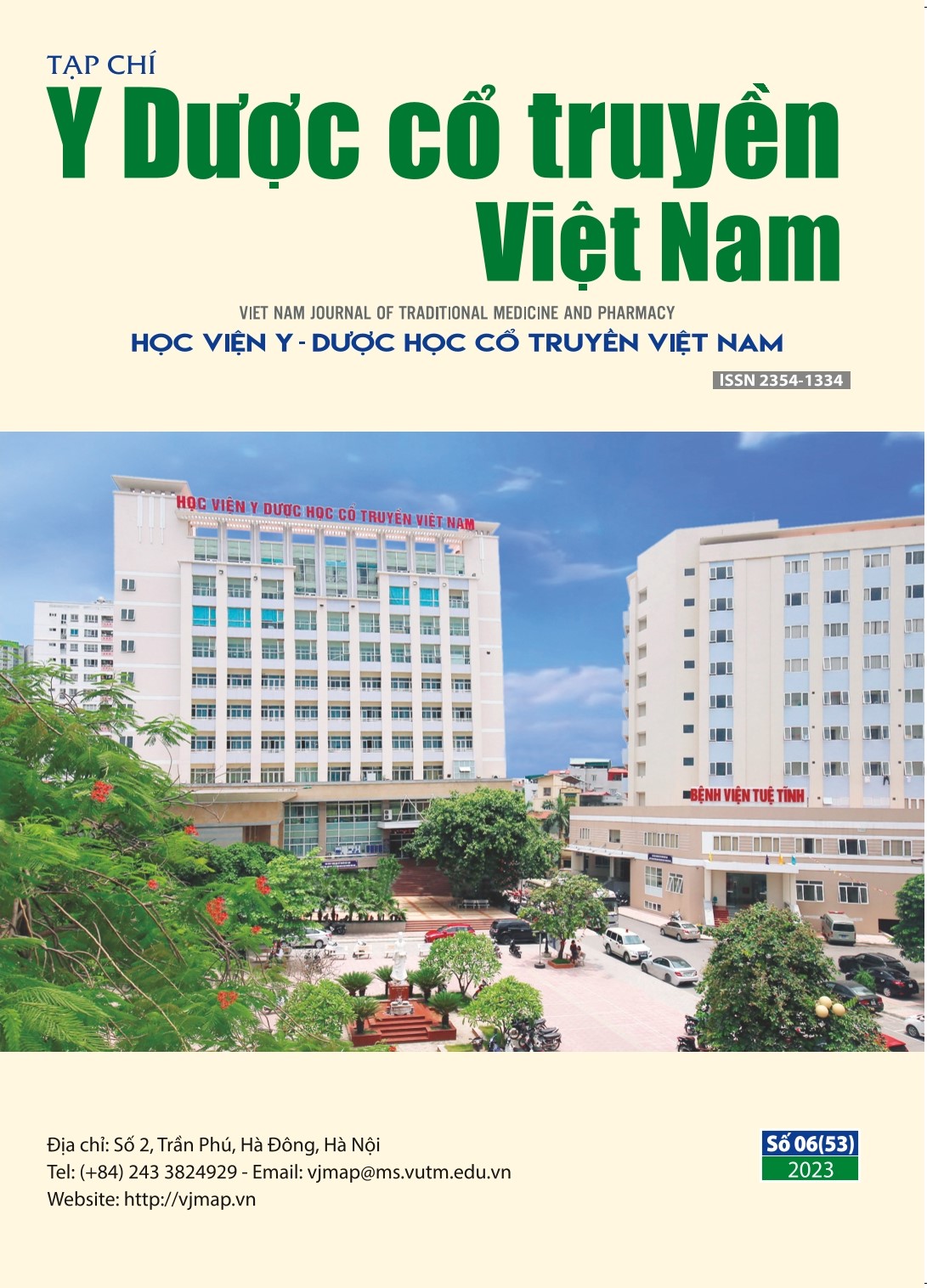Đánh giá độc tính cấp và độc tính bán trường diễn của viên nang cứng dạ dày Tuệ Tĩnh trên mô hình thực nghiệm
Main Article Content
Abstract
Objectives: To evaluate the acute toxicity of Da day Tue Tinh hard capsules on an experimental model. To evaluate the sub-chronic toxicity of Da day Tue Tinh hard capsules on an experimental model.
Subjects and methods: Orally evaluate the acute toxicity of Da day Tue Tinh hard capsules on white mice using the Litchfield - Wilcoxon method. Evaluate the sub-chronic toxicity of Da day Tue Tinh hard capsules on white rats following the Ministry of Health guidelines orally.
Results: Accurate toxicity: The LD50 of Da day Tue Tinh hard capsules was not determined. Mice were given the highest dose of 19.375 mg/kg/day (43,4 times the estimated effective dose for humans) and did not show acute toxicity symptoms; no mice died. Sub-chronic toxicity: After being given Da day Tue Tinh hard capsules at the doses of 260,4mg /kg/day and 781,2mg /kg/day continuously for four weeks, rats were still healthy and gained weight. Da day Tue Tinh hard capsules did not alter the haematological index, liver and kidney function biochemical indexes, or histology. Therefore, Da day Tue Tinh is safe at the used dosage and intervals.
Conclusions: Da day Tue Tinh hard capsules did not cause acute or sub-chronic toxicity in experimental animals.
Article Details
Keywords
Da day Tue Tinh hard capsules; Acute toxicity; Sub-chronic toxicity; Experimental animal.
References
2. Bộ Y tế. Quyết định số 01/2007/ QĐ-BYT về việc ban hành Quy định về thuốc thử trên lâm sàng. (2007).
3. Đỗ Trung Đàm. Phương pháp Litchfield – Wilcoxon. Phương pháp xác định độc tính cấp của thuốc,Nxb Y học, (1996), tr.101-112
4. Hải Thượng Lãn Ông. Hải Thượng Y tông tâm lĩnh, quyển 1,2. Nhà xuất bản Y học, (1997).
5. OECD. Drug safety evaluation I: Acute and subchronic toxicity assessment. USA Academy Press, (2012).
6. World Health Organization. Working group on the safty and efficacy of herbal medicine. Report of regional office for the western pacific of the World Health Organization, (2013).

